Earthquakes: Types, Measurement, and Hazards in Geology
1/26
There's no tags or description
Looks like no tags are added yet.
Name | Mastery | Learn | Test | Matching | Spaced |
|---|
No study sessions yet.
27 Terms
What is an earthquake?
A vibration resulting from rapid energy release due to earth movement along faults, nuclear explosions, landslides, volcanoes, or meteorite impacts.
Who studies earthquakes?
Seismologists, who investigate triggers, locations, damage potential, and prediction of earthquakes.
What is the Elastic Rebound Theory?
The theory that stress builds up in rocks until it exceeds their strength, causing a sudden release of energy that results in an earthquake.
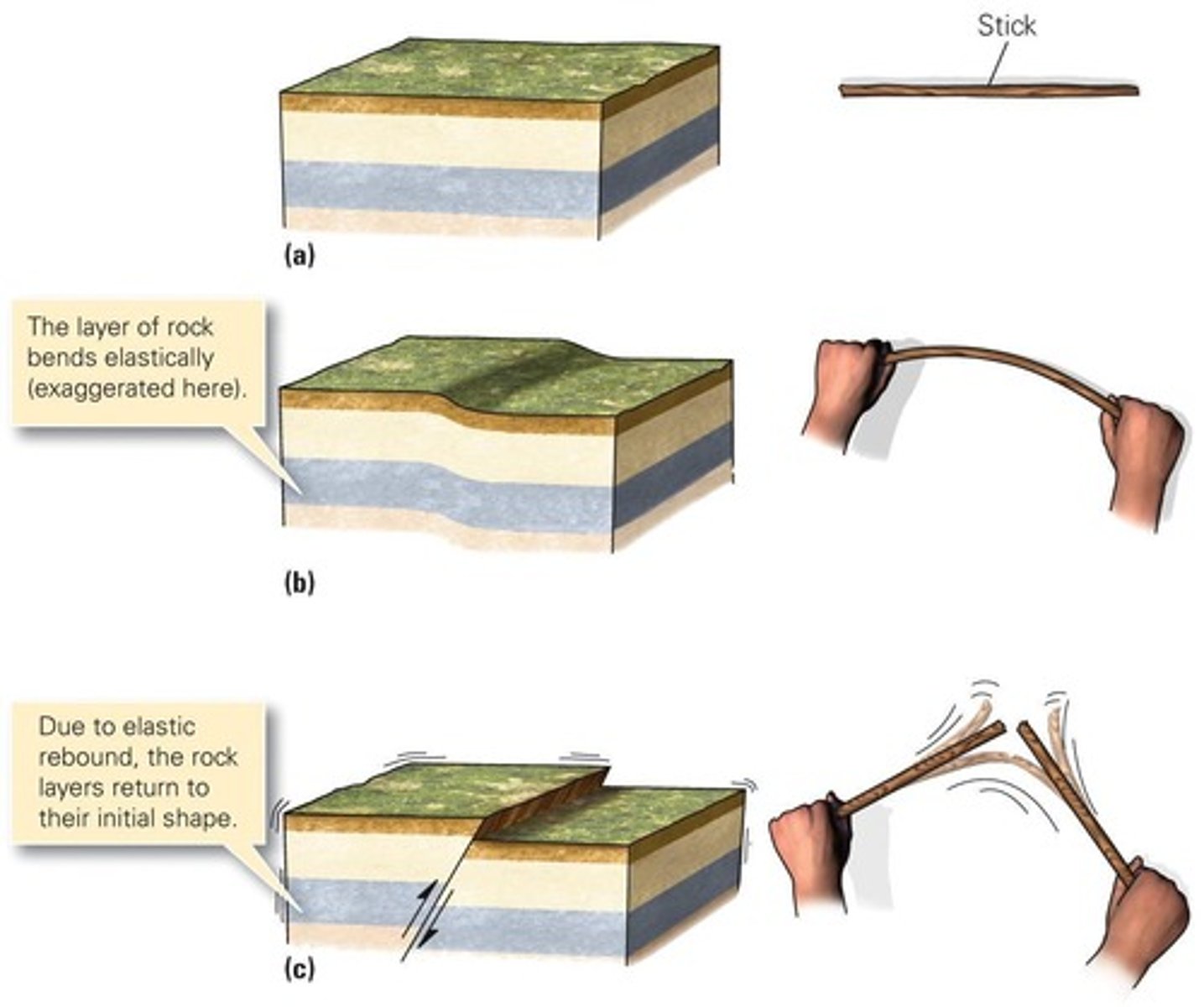
What are foreshocks?
Smaller earthquakes that occur before a major earthquake, potentially serving as a precursor to the main event.
What are aftershocks?
Smaller earthquakes that follow a major earthquake, resulting from adjustments in the crust.
What is the focus of an earthquake?
The exact location within the Earth where the earthquake originates, also known as the hypocenter.

What is the epicenter of an earthquake?
The point on the Earth's surface directly above the focus of the earthquake.
What are the two main types of seismic waves?
Body waves (P-waves and S-waves) and surface waves (L-waves and R-waves).
What are P-waves?
Primary or compressional waves that are the fastest seismic waves and can travel through solids, liquids, and gases.
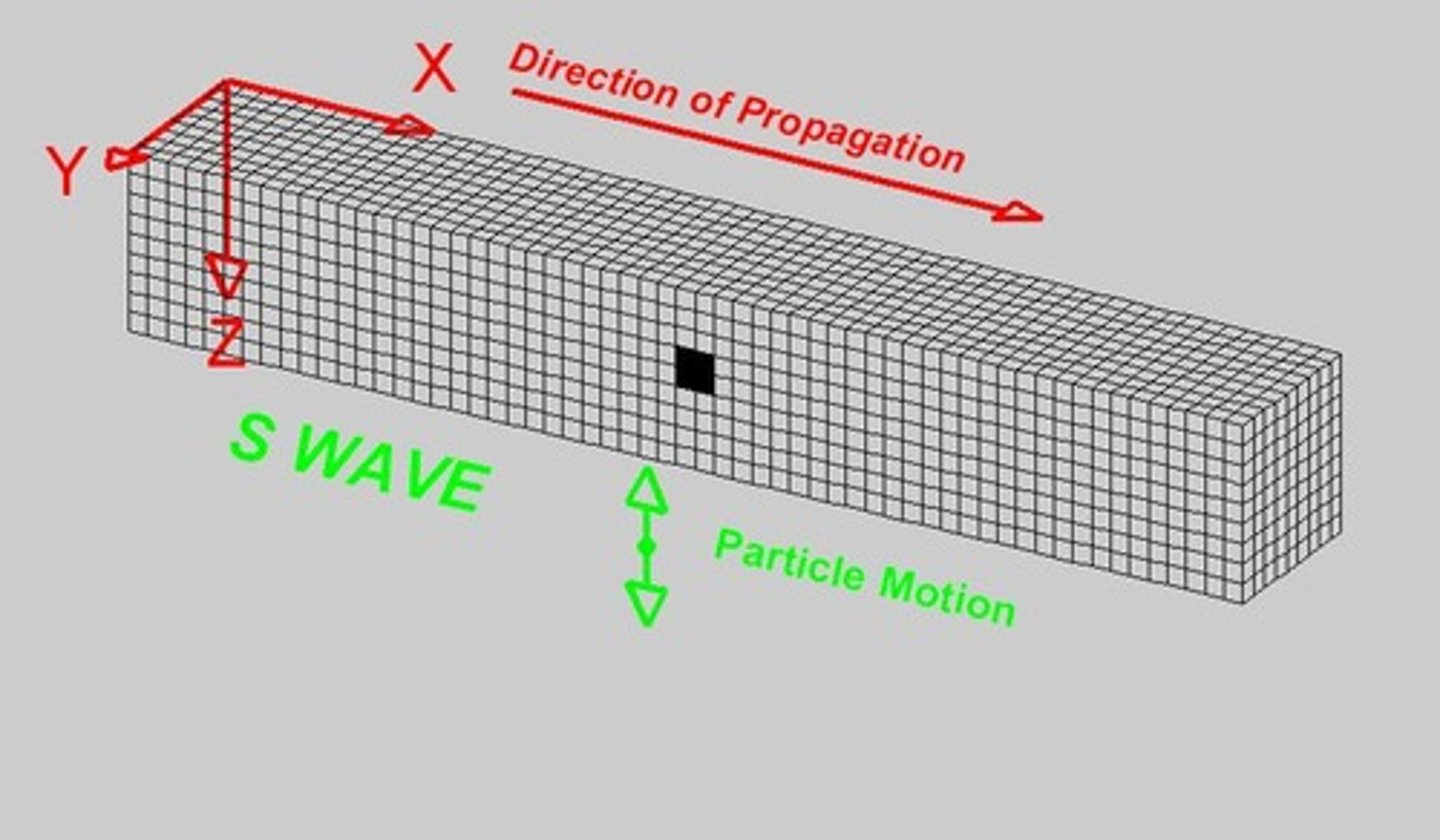
What are S-waves?
Secondary or shear waves that are slower than P-waves and can only travel through solids.
What are surface waves?
Waves that travel along the Earth's surface and are typically slower and more destructive than body waves.
What is a seismograph?
An instrument that records ground motion produced by an earthquake, measuring both vertical and horizontal movements.

What is a seismogram?
A visual record of the seismic waves produced by an earthquake, showing the order of arrival of different wave types.
How is the epicenter of an earthquake determined?
By calculating the difference in arrival times between P-waves and S-waves at multiple seismic stations and using triangulation.
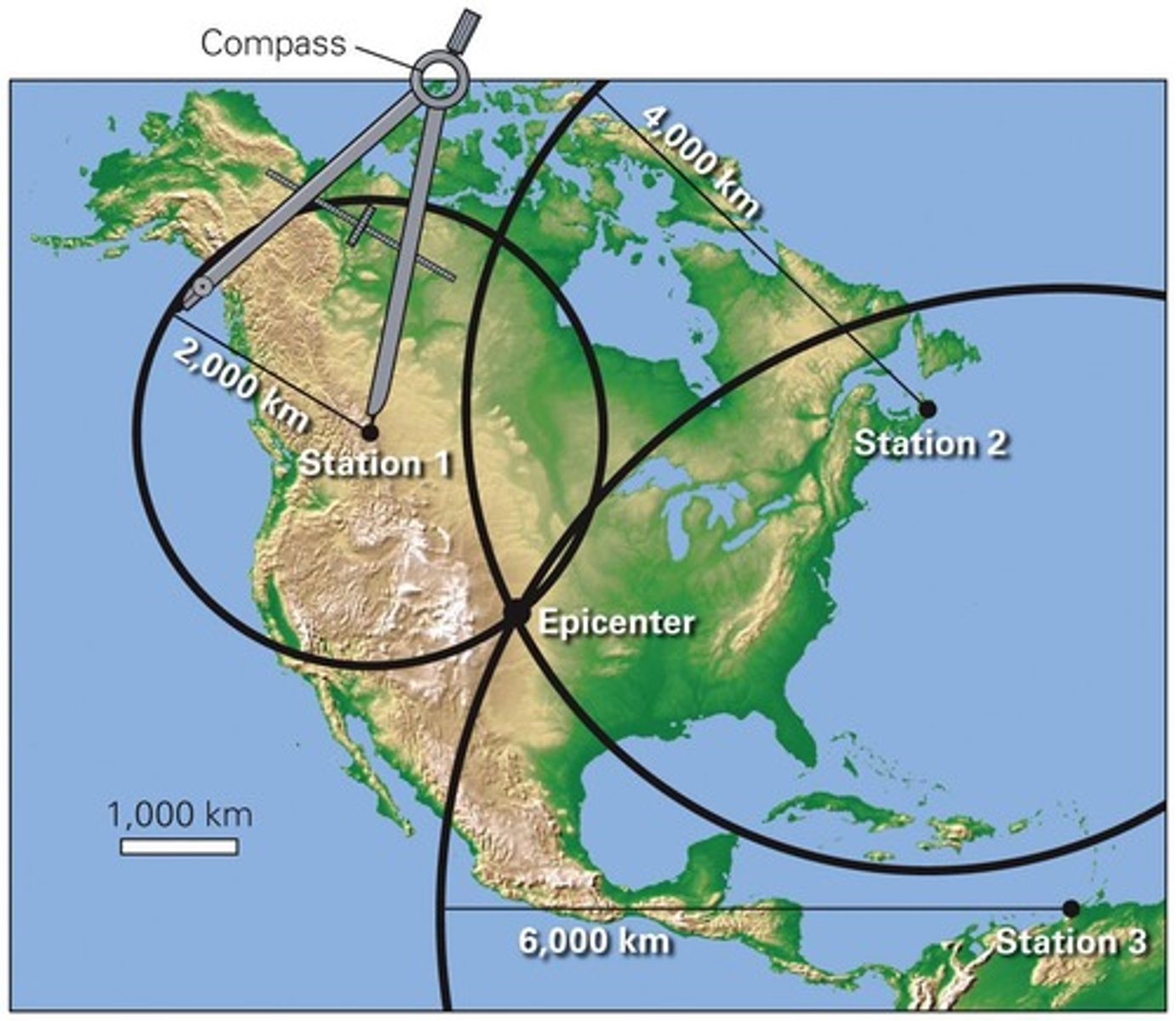
What is earthquake intensity?
A qualitative measure of the earthquake's force based on observed effects and damage, often measured using the Modified Mercalli Scale.
What is earthquake magnitude?
A measure of the energy released during an earthquake, calculated from seismic wave measurements, commonly using the Richter or moment magnitude scales.
What is the Modified Mercalli Scale?
A scale that measures earthquake intensity from I (not felt) to XII (total destruction) based on observed effects.
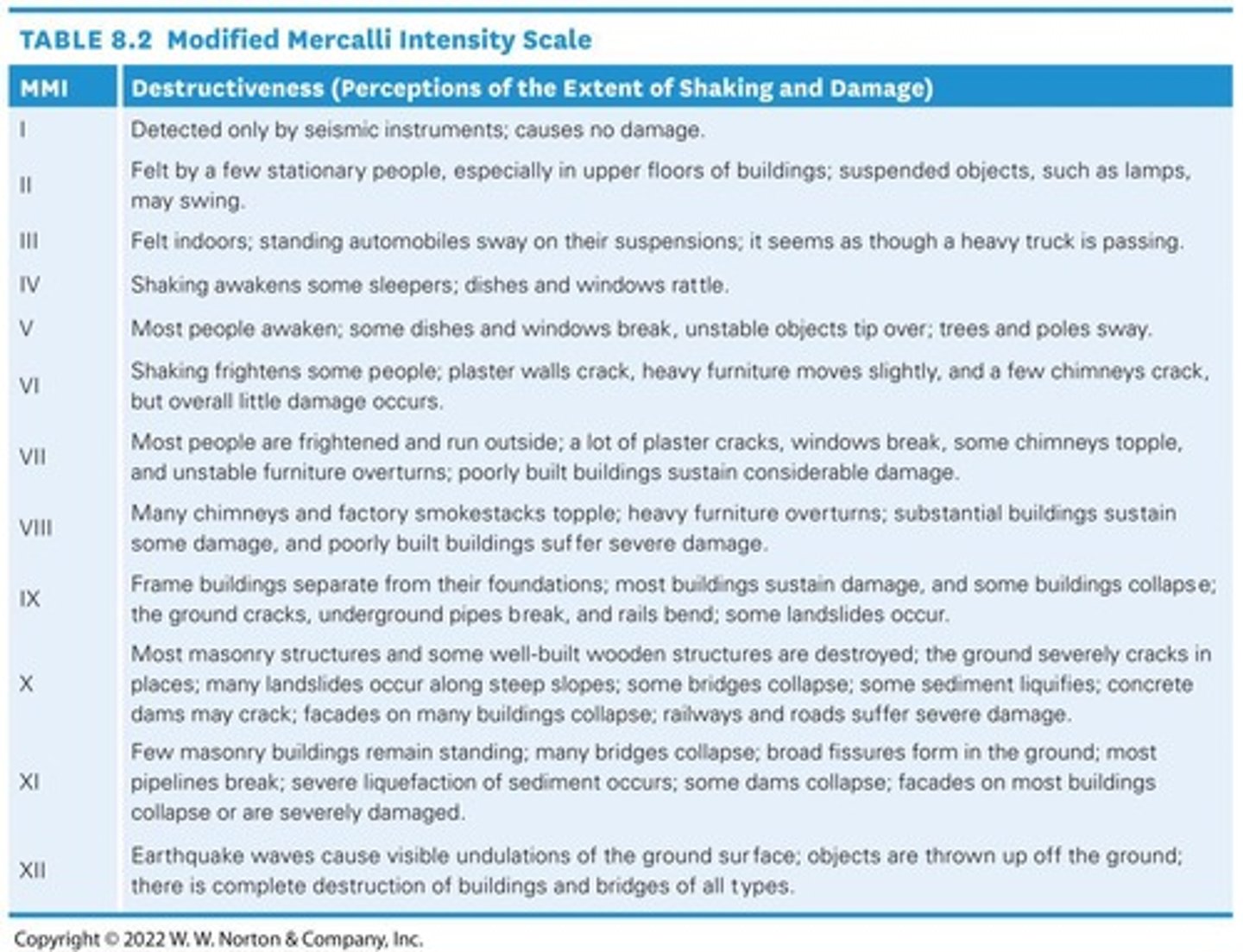
Where do most earthquakes occur?
Most earthquakes occur along plate boundaries, particularly at divergent, transform, and convergent boundaries.
What is liquefaction?
A phenomenon where saturated sediments behave like a fluid during an earthquake, leading to significant ground damage.
What is a tsunami?
A seismic sea wave caused by underwater earthquakes or volcanic eruptions, often resulting in significant coastal damage.
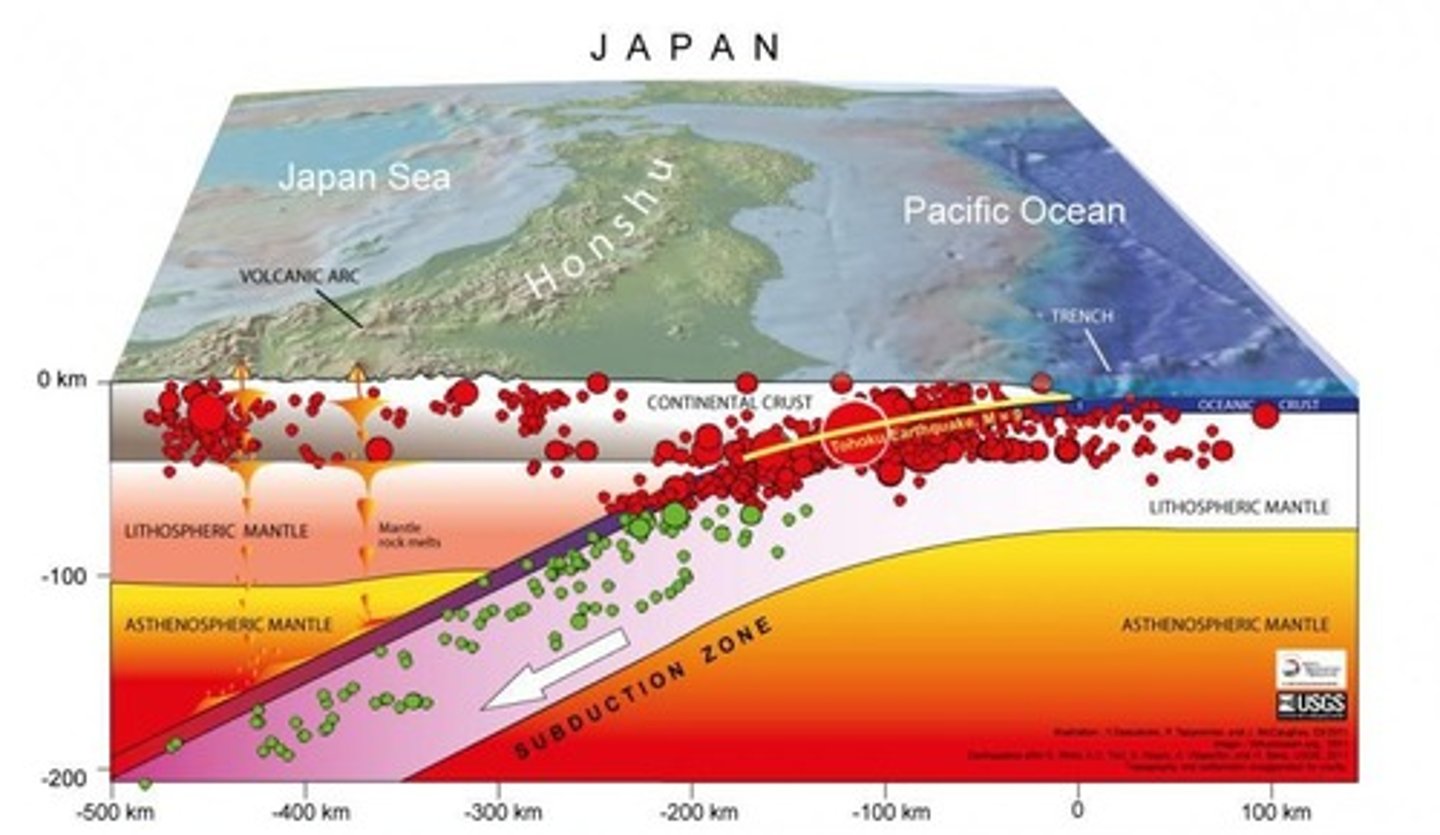
What was the Great Tohoku Earthquake?
A devastating earthquake that struck Japan in 2011, leading to widespread destruction and a major tsunami.
What are intraplate earthquakes?
Earthquakes that occur away from plate boundaries, often due to remnant crustal weaknesses.
What is the significance of the San Andreas Fault?
A major transform fault in California known for its seismic activity and potential for large earthquakes.

What are the characteristics of earthquakes at divergent boundaries?
Typically shallow earthquakes (<10 km deep) occurring at mid-ocean ridges.
What are the characteristics of earthquakes at convergent boundaries?
Earthquakes can be shallow, intermediate, or deep, often associated with subduction zones.
What are the potential hazards associated with earthquakes?
Hazards include structural damage, landslides, tsunamis, and liquefaction, which can lead to casualties and economic loss.
What was the impact of the Northridge earthquake in California?
It resulted in approximately 60 deaths, 7,000 injuries, and $13-20 billion in damages.